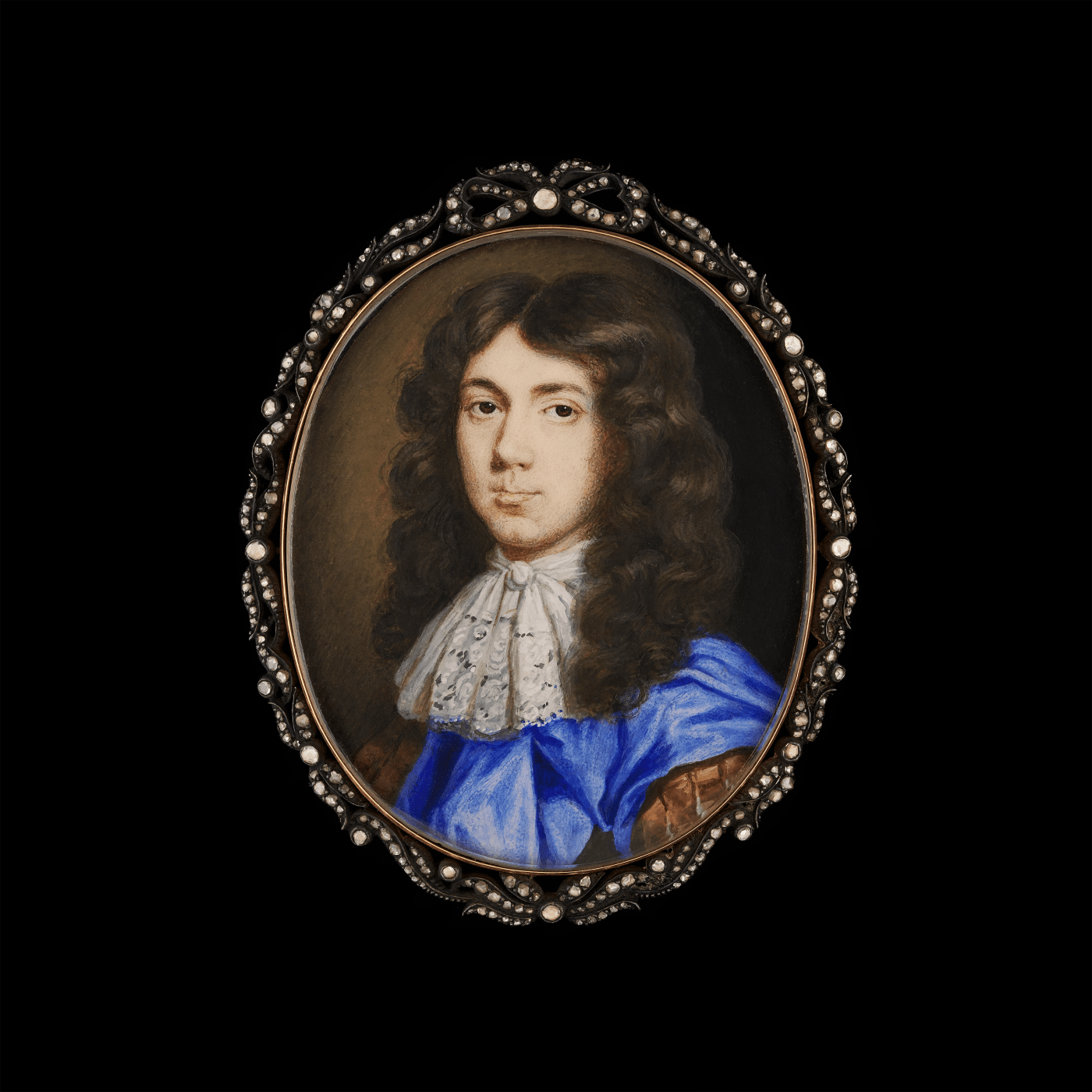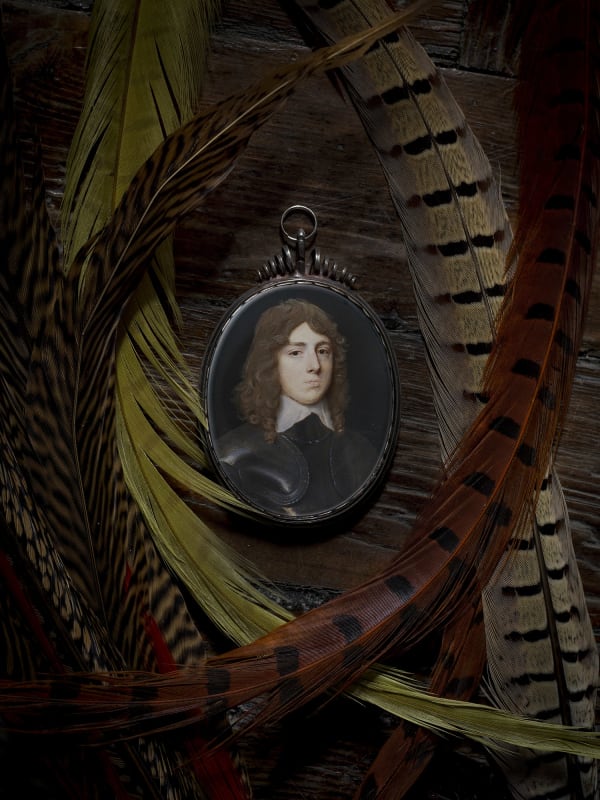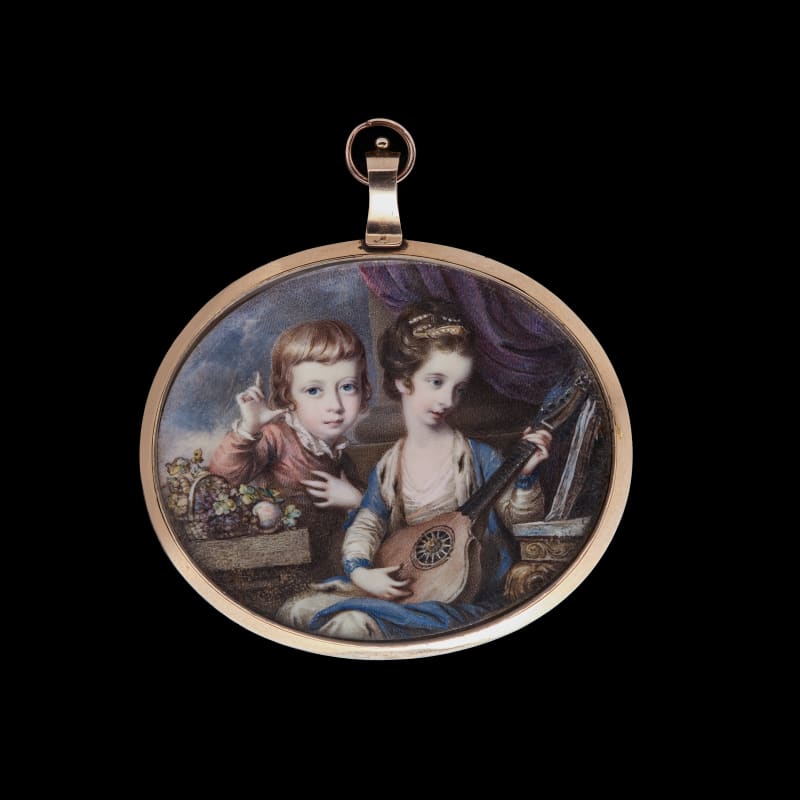Full Biography
Portrait miniaturist and courtier[1], Richard Gibson was born in the early seventeenth century. Anecdotally he was born in Cumberland in 1615, however it has recently been proposed that he might have been born in London in 1605 to the ‘picturemaker’ John Gibson. Richard was also known as ‘Dwarf Gibson’, on account of his 3 foot 10 inch stature. First employed as a page in a noble household at Mortlake, his natural talent for drawing was noted and he was apprenticed him to Francis Cleyn (c.1582-1658) at the Mortlake Tapestry Works. By 1639, he had entered the service of Philip Herbert, fourth Earl of Pembroke, the Lord Chamberlain. It was in this household that Gibson met his future wife, Anne Sheppard. Both Richard and Anne acquired appointments at court and gained considerable favour with the King. Their wedding at court on Valentine’s Day 1641 was followed with great festivities.
Gibson did not follow the king to Oxford during the English Civil War, remaining with the Earl of Pembroke. He later became associated with Charles, second Earl of Carnarvon, the grandson of the Earl of Pembroke. “Gibson became the portrait painter to a group of patrons linked by family and political sympathy, temporarily suspended from government and political power but destined to return.”[1]
Portrait miniaturist and courtier[1] , Richard Gibson was born in the early seventeenth century. Anecdotally he was born in Cumberland in 1615, however it has recently been proposed that he might have been born in London in 1605 to the ‘picturemaker’ John Gibson. Richard was also known as ‘Dwarf Gibson’, on account of his 3 foot 10 inch stature. First employed as a page in a noble household at Mortlake, his natural talent for drawing was noted and he was apprenticed him to Francis Cleyn (c.1582-1658) at the Mortlake Tapestry Works. By 1639, he had entered the service of Philip Herbert, fourth Earl of Pembroke, the Lord Chamberlain. It was in this household that Gibson met his future wife, Anne Sheppard. Both Richard and Anne acquired appointments at court and gained considerable favour with the King. Their wedding at court on Valentine’s Day 1641 was followed with great festivities.
Gibson did not follow the king to Oxford during the English Civil War, remaining with the Earl of Pembroke. He later became associated with Charles, second Earl of Carnarvon, the grandson of the Earl of Pembroke. “Gibson became the portrait painter to a group of patrons linked by family and political sympathy, temporarily suspended from government and political power but destined to return.”[1]
During this period, his portraits bear the monogram ‘DG’, a moniker for ‘Dwarf’ or ‘Dick’. He later changed his monogram or signature[2] to ‘RG’ for his given name, Richard. Perhaps Gibson felt as though he no longer needed to make capital out of being a ‘dwarf painter’ and could be identified by his artistic merit. The earliest known occurrence of this new signature[3] is on a chalk drawing dated 1669 in the British museum.[2]
In May of 1672, Gibson was re-elected to the court as the king’s limner under Charles II. This came two weeks after the death of his contemporary Samuel Cooper. To succeed Samuel Cooper was no light feat. Various miniatures from Richard Gibson before and after this date are available for sale below[4] . Gibson’s appointment lasted until the following year when he was succeeded by Nicholas Dixon. Although[5] , Gibson would go onto paint portrait miniatures for William III and Mary III, his new appointment came as drawing-master to the two young daughters of James, Duke of York.
Richard and Anne had two daughters of their own, Susannah-Penelope Rosse and Anne van Vrybergen. Susannah-Penelope followed in her father’s footsteps as a distinguished miniaturist in her own right, painting miniatures which were likely framed by her husband, the court jeweller Michael Rosse. The pair also had three sons: William, John, and Edward. It is believed, that William and Edward similarly carried on their father’s artistic legacy. William was a miniaturist, connoisseur, and dealer in old-master drawings, while Edward was an oil painter and pastellist. John was likely named after his grandfather, if Richard was indeed born to the picturemaker John Gibson.
A number of significant sales and available works by Richard Gibson are listed above, these significant acquisitions made by Philip Mould & Company have included works such A Pair of Three-Quarter length portraits of James II, and his Portrait of Barbara Villiers. Other available works listed above include a fantastic portrait of a courtier A Gentleman, wearing brown silk sublet with slashed sleeves and blue cloak.













